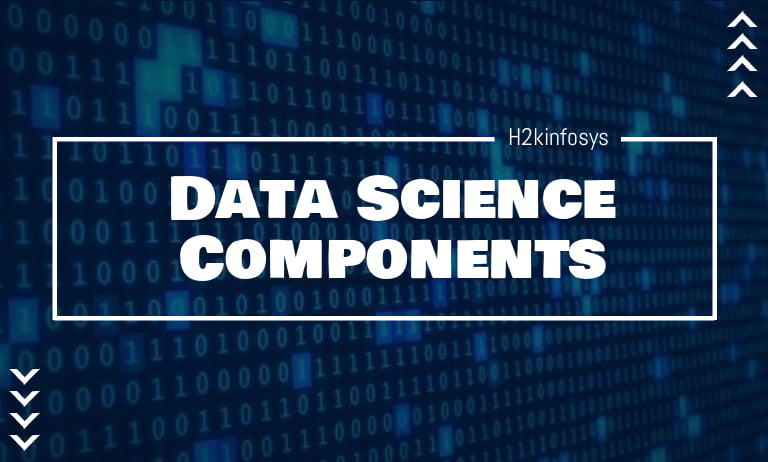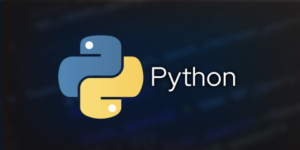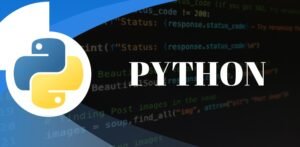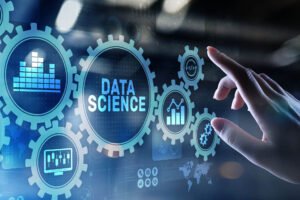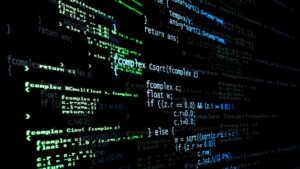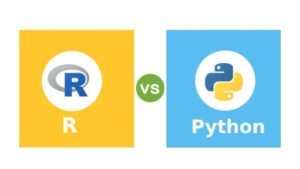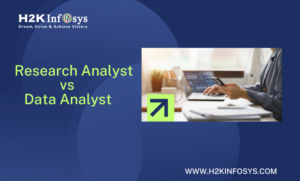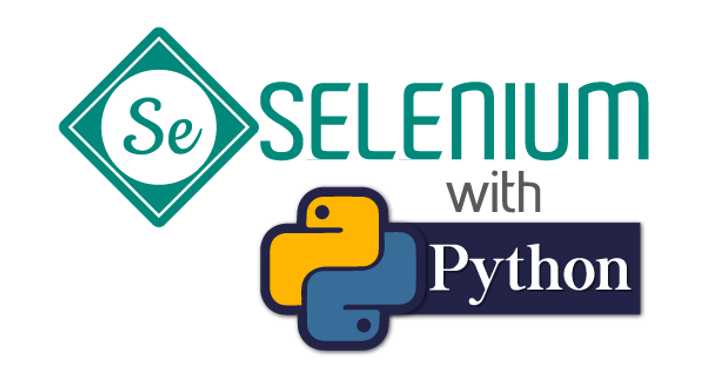The main components of Data Science are:
Statistics:
The essential component of Data Science is Statistics. It is a method to collect and analyze the numerical data in a large amount to get useful and meaningful insights.
There are two main categories of Statistics:
Descriptive Statistics:
Descriptive Statistics helps to organize data and only focuses on the characteristics of data providing parameters. For example, you want to find the average height of students in a classroom, in descriptive statistics, you will record the heights of all students in the class, and then you would find the maximum, minimum and average height of the class.
Inferential Statistics:
Inferential statistics generalizes a large data set and applies probability before concluding. It also allows you to infer parameters of the population based on sample stats and build models on it. For example, if we consider the same example of finding the average height of students in a class, then in Inferential Statistics, you will take a sample set of the class, basically a few people from the entire class. You already had grouped the class into tall, average, and short. In this method, you will build a statistical model and expand it for the entire population in the class.
Visualization:
Visualization means representing the data in visuals such as maps, graphs, etc. so that people can understand it easily. It makes it easy to access a vast amount of data. The main goal of data visualization is to make it easier to identify patterns, trends, and outliers in large data sets. The main benefits of data visualization include:
- It can absorb information quickly, improve insights, and make faster decisions.
- It increases understanding of the next steps that must be taken to improve the organization.
- It provides an improved ability to maintain the audience’s interest with the information they can understand.
- It gives an easy distribution of information that increases the opportunity to share insights with everyone involved.
- It eliminates the need for data scientists since data is more accessible and understandable.
- It increases the ability to act on findings quickly and, therefore, achieve success with higher speed and fewer mistakes.
Machine Learning:
Machine Learning acts as a backbone for data science. It means providing training to a machine in such a way that it acts as a human brain. Various algorithms are used to solve the problems. With the help of Machine Learning, it becomes easy to make predictions about unforeseen/future data.
Machine Learning makes a prediction, analysis patterns, and gives recommendations and is frequently used in fraud detection and client retention.
For example, a social media platform, i.e., Facebook, where fast algorithms are used to collect the behavioral information of every user available on social media and also recommend them the relevant articles, multimedia files, and much more based on their choice.
There are four types of Machine learning:
Supervised Machine Learning
In this type of machine learning, the machine mainly focuses on regression and classification problems. We already know the correct output and relationship with input and output in this phase. It also deals with labeled datasets and algorithms, and the machine gets the last calculated data on the machine, also known as target data. It includes the data as well as a result. There are two major processes:
- Classification: It is the process in which the input data is labeled based on past data experiences. The machines are also trained with algorithms about the data format, and the algorithms specify the format to recognize by the machine. The examples of classification are weather forecasting and specifying whether tomorrow will be hot or cold. Naive Bayes, Support Vector Machine and Decision Tree are the most popular supervised machine learning algorithms.
- Regression: It is the process to identify the labeled data and calculate the results based on prediction. The machine can learn the data and display real-valued results. These results are based on independent values. For example, a human picture is given to a common man to identify the gender of the person in the image. Another example is the prediction of the temperature of tomorrow based on past data. Linear regression is used for regression problems.
Unsupervised Machine Learning
Here, the results are unknown and need to be defined. It uses unlabeled data for machine learning, and we have no idea about the types of results. The machine observes the algorithms and then finds the structure of data and has less computational complexity and uses real-time analysis of data. The results are very reliable compared to supervised learning. For example, we can present images of fruits to this model, and this model makes clusters and separates them based on a given pattern and relationships. There are two types:
- Clustering: In clustering, data is found in segments and meaningful groups. It is based in small groups. These groups have their patterns through which data is arranged and segmented. K-means clustering, hierarchical clustering, and density-based spatial clustering are more popular clustering algorithms.
- Dimensionality Reduction: The unnecessary data is removed to summaries the distribution of data in groups in this phase.
Semi-Supervised Machine Learning
Semi-supervised machine learning, also known as hybrid learning, and it lies between supervised and unsupervised learning. This model has a combination of labeled and unlabeled data. This data has fewer shares of labeled data and more shares of unlabeled data. The labeled-data is very cheap in comparison to the unlabeled data. The procedure is that the algorithm uses unsupervised learning algorithms to cluster the labeled data and then uses the supervised learning algorithm.
Reinforcement Learning
In this learning, there are no training data sets. The machine has special software that works as an agent with the environment to get feedback. The work of an agent is to achieve the target and get the required feedback. An example of a reinforcement learning problem is playing games, in which an agent has a set of goals to get high scores and feedback in terms of punishment and rewards while playing.
Deep Learning:
Deep Learning is a new machine learning research in which the algorithm selects the analysis model to follow. Here data goes through multiple numbers of non-linear transformations to obtain an output. Deep denotes many steps in this case. The output of one step will be the input for another step, and this is done continuously to get a final output. For example, matrix transformation. Deep learning is sometimes known as deep neural networks (DNN) because it uses multi-layered artificial neural networks to implement deep learning. Artificial neural networks are built in the same way, with neural nodes that are connected like a web. Deep learning algorithms require very powerful machines and are very useful in detecting patterns from input data.
Domain Expertise:
Domain expertise means the specialized knowledge or skills of a particular area. There are various areas in data science for which we need domain experts. You cannot unlock the full feature of an algorithm without having proper knowledge about the field from where the data is coming. The lesser we know about the problem, the more difficult it will be to solve it. Also, a high level of expertise in the area can vastly improve the accuracy of the model you want to build. That is why data scientists are usually well-informed in the different areas they work in. They may not be experts in everything, but a good data scientist usually focuses on more than one area of expertise.
Data Engineering:
Data Engineering involves acquiring, storing, retrieving, and transforming the data. The key to understanding data engineering lies in the engineering part. Engineers design and build things. Data engineers design and build pipelines that transform and transport data into a format, and it reaches the Data Scientists or other end users in a highly usable state. These pipelines must take data from many different sources and collect them into a single warehouse representing the data uniformly as a single source of truth.
Advanced Computing:
Advanced computing involves designing, writing, debugging, and maintaining the source code of computer programs. Advanced computing capabilities are used to handle a growing range of challenging science and engineering problems, many of which are compute- and data-intensive.
Mathematics:
Mathematics involves the study of quantity, structure, space, and changes. Good mathematics is important for a data scientist. Beyond the basics of calculus, linear algebra, and probability, there is a certain kind of mathematical thinking that comes up pretty often when you’re trying to understand data. It involves quantifying something you want to measure, then understanding how the quantification works in mathematical terms. The exciting part is not usually doing math, but figuring out what math to do.
Programming Languages:
Generally, data organization and investigation are finished by computer programming. In data science, the most used two programming languages are Python and R.
- PYTHON: Python programming language is a high-level programming language providing a vast standard library. It is the most popular language as most of the data scientists love this one. It is extensible and offers free data analysis libraries. Python’s best features are dynamic type, functional, object-oriented, automatic memory management, and procedural.
- R: R is the popular programming language among the Data Scientists, which can be used on Windows, UNIX, and Mac Operating System. The best feature of R language is a data visualization that would be tougher in Python, but it is less beginner-friendly than Python. R language is used to do social analysis with the use of post data. Twitter also uses this language for data visualization, and semantic clustering, and Google use to evaluate advertisement efficiency and make economic predictions.
- JAVA: Java is an object-oriented programming language providing a large number of tools and libraries. It is simple, portable, secure, platform-independent, object-oriented, and multi-threaded; that is why it is suitable for data science and machine learning.
- NoSQL: Structured Query Language is used to handle structured data from Relational Database Management System through programming. Still, sometimes you need to process some unstructured data with no specific schema, for which you must need to use NoSQL. It ensures improved performance in storing a vast amount of data.
